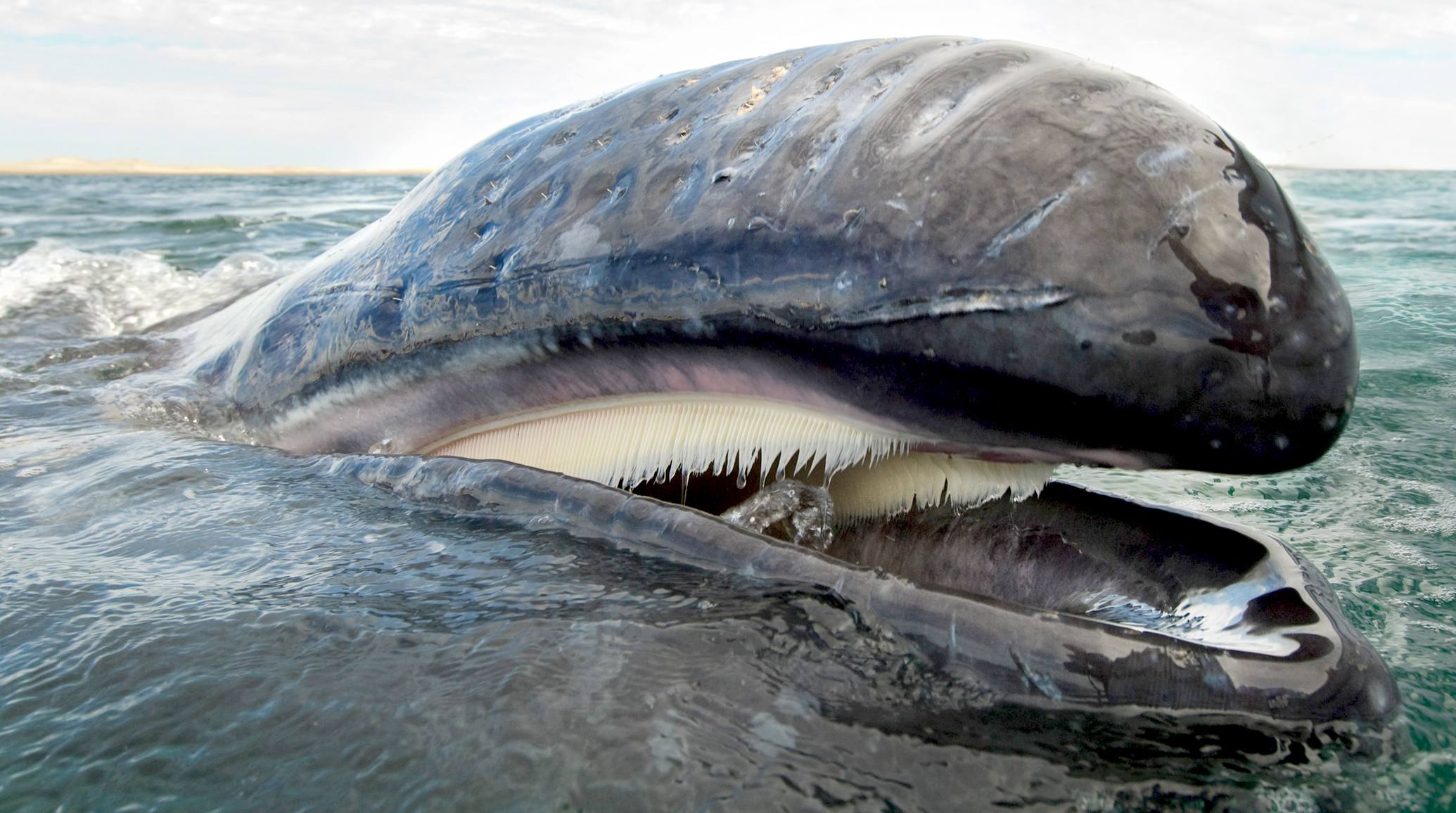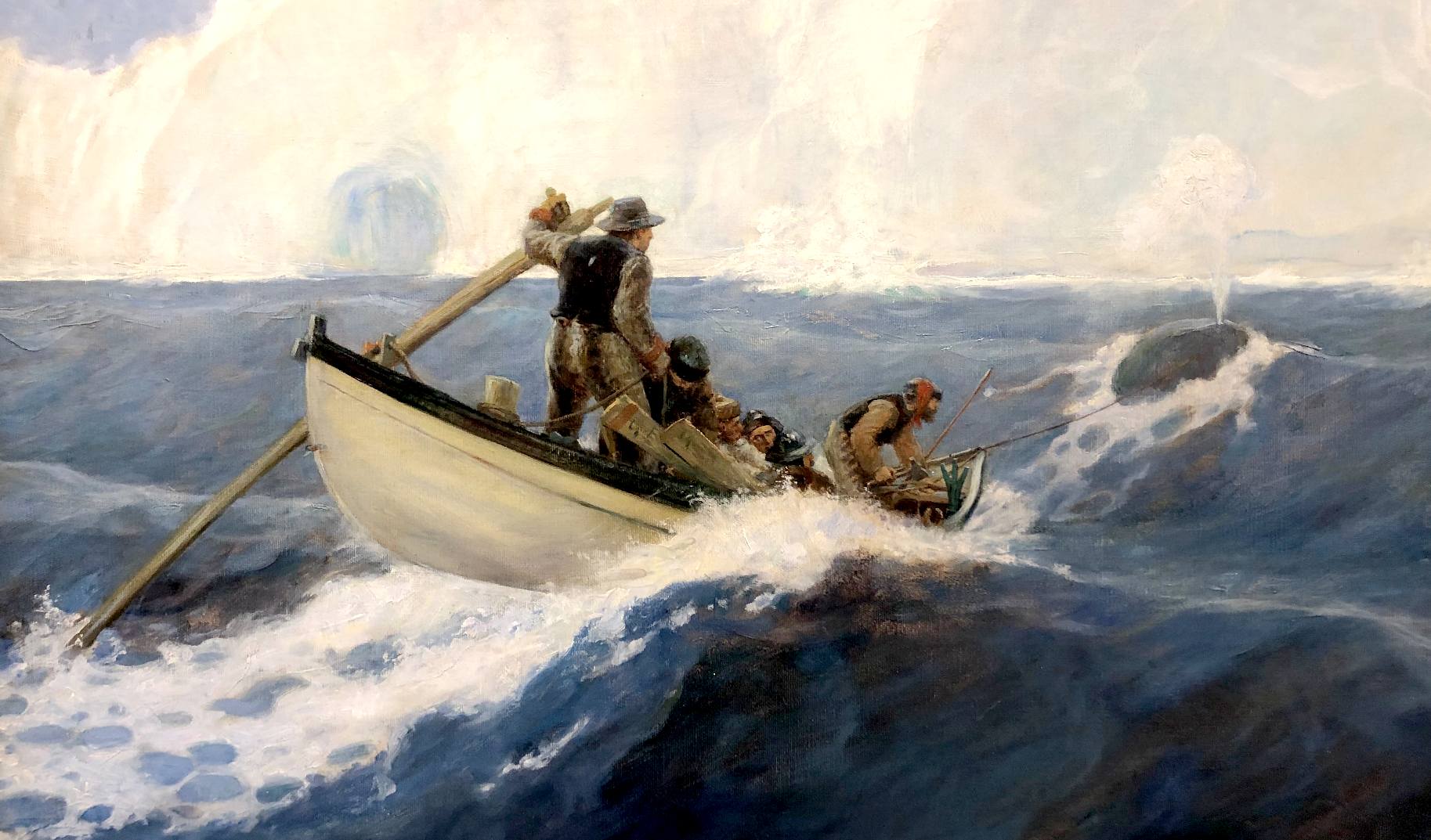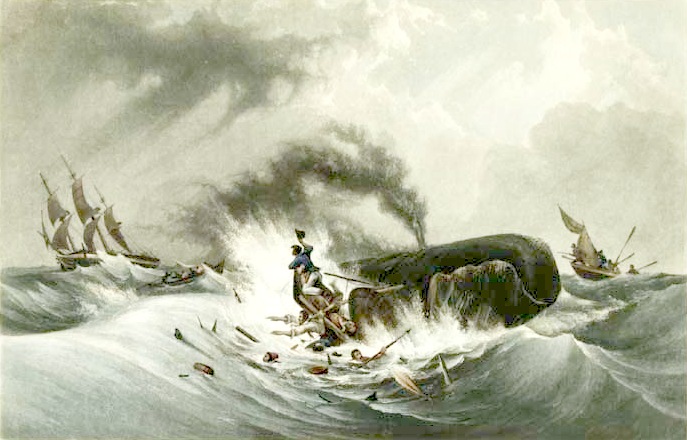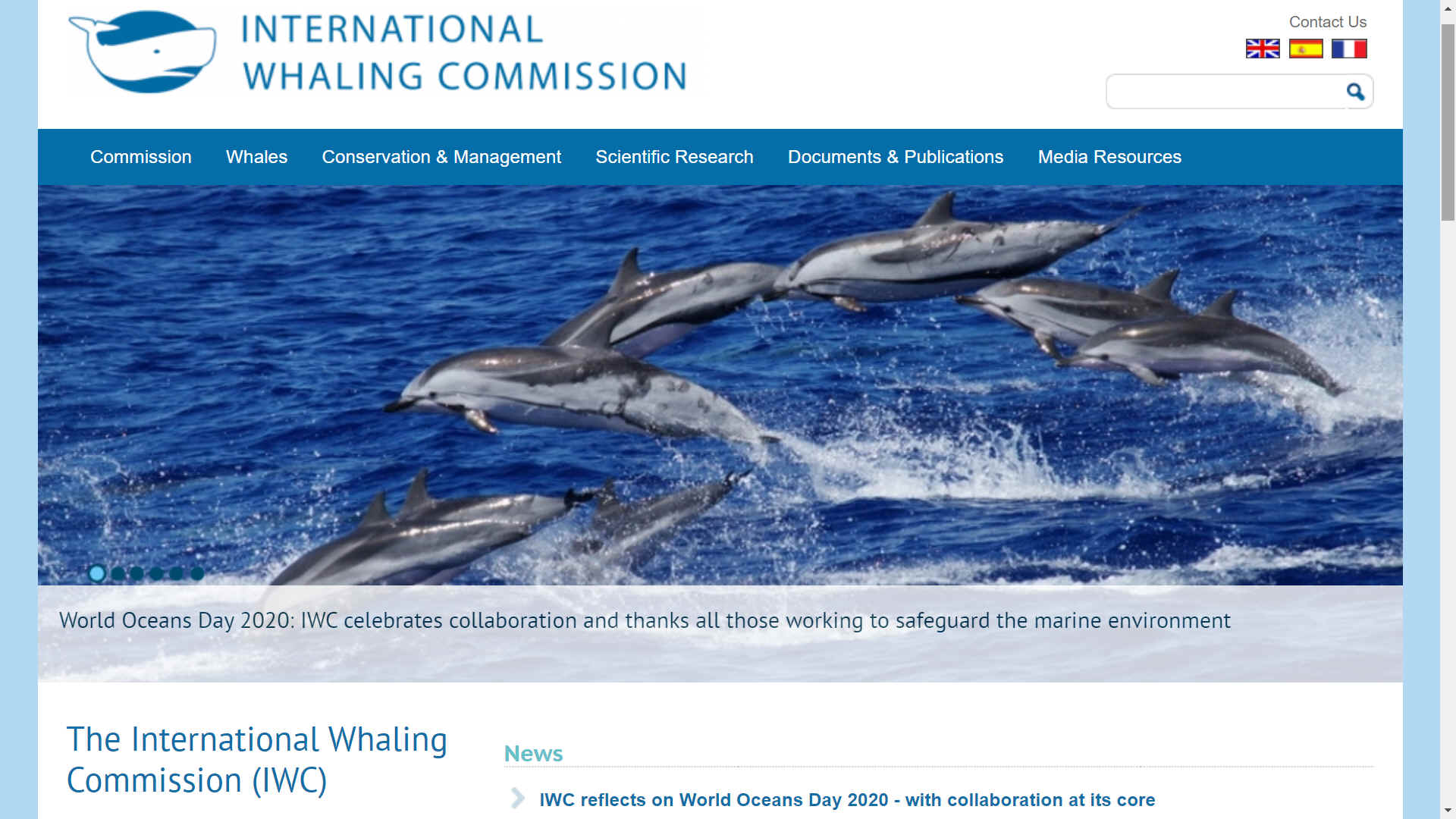
Bowhead whales live all
their lives in the Arctic, they do not migrate like other baleen whales.
The
bowhead whale
(Balaena mysticetus) is a species of baleen whale belonging to the family Balaenidae and the only living representative of the genus Balaena. It is the only baleen whale endemic to the Arctic and subarctic waters. Bowheads are named after their characteristic massive triangular skull, which is used to break through Arctic ice. Other common names of the species are the Greenland right whale or Arctic whale. American whalemen called them the steeple-top, polar whale, or Russia or Russian whale.
Bowheads have the largest mouth of any animal representing almost one-third of the length of the body, the longest
baleen plates with a maximum length of 4 m (13.1 ft) and may be the longest-lived mammals, with the ability to reach an age of more than 200 years.
The bowhead was an early whaling target. The population was severely reduced before a 1966 moratorium was passed to protect the species. Of the five stocks of bowhead populations, three are listed as "endangered", one as "vulnerable", and one as "lower risk, conservation dependent" according to the IUCN Red List. The global population is assessed as of least concern.
ECOLOGY
The bowhead whale is the only baleen whale to spend its entire life in the
Arctic and subarctic waters. The Alaskan population spends the winter months in the southwestern Bering Sea. The group migrates northward in the spring, following openings in the ice, into the Chukchi and Beaufort seas. The whale's range varies depending on climate changes and on the forming/melting of ice.
Historical range could have been broader and more southern than that of currently regarded as bowheads had been abundant among Labrador and Newfoundland (Strait of Belle Isle), and northern Gulf of St. Lawrence at least until 16th and 17th centuries, although whether or not this was due to colder climate of those periods is unclear.
Distributions of Balaena spp. during the Pleistocene were far more southerly as fossils have been excavated from Italy and North Carolina, thus could have overlapped between those of Eubalaena based on those locations.
POPULATION
Generally, five stocks of bowhead whales are recognized:
1) The Western Arctic stock in the Bering, Chukchi, and Beaufort Seas,
2) The Hudson Bay and Foxe Basin stock,
3) The Baffin Bay and Davis Strait stock,
4) The Sea of Okhotsk stock, and
5) The Svalbard-Barents Sea stock. However, recent evidence suggests that the Hudson Bay and Foxe Basin stock and the Baffin Bay and Davis Strait stock should be considered one stock based on genetics and movements of tagged whales.
WHALING
The bowhead whale has been hunted for blubber, meat, oil, bones, and baleen. Like the right whale, it swims slowly, and floats after death, making it ideal for whaling. Before commercial whaling, they were estimated to number 50,000.
Commercial bowhead whaling began in the 16th century when the Basques killed them as they migrated south through the Strait of Belle Isle in the fall and early winter. In 1611, the first whaling expedition sailed to Spitsbergen. The whaling settlement Smeerenburg was founded on Spitzbergen in 1619. By midcentury, the population(s) there had practically been wiped out, forcing whalers to voyage into the "West Ice"the pack ice off Greenland's east coast. By 1719, they had reached the Davis Strait, and by the first quarter of the 19th century, Baffin Bay.
In the North Pacific, the first bowheads were taken off the eastern coast of Kamchatka by the Danish whaleship Neptun, Captain Thomas Sodring, in 1845. In 1847, the first bowheads were caught in the Sea of Okhotsk, and the following year, Captain Thomas Welcome Roys, in the bark Superior, of Sag Harbor, caught the first bowheads in the Bering Strait region. By 1849, 50 ships were hunting bowheads in each area.
By 1852, 220 ships were cruising around the Bering Strait region, which killed over 2,600 whales. Between 1854 and 1857, the fleet shifted to the Sea of Okhotsk, where 100160 ships cruised annually. During 18581860, the ships shifted back to the Bering Strait region, where the majority of the fleet cruised during the summer until the early 20th century. An estimated 18,600 bowheads were killed in the Bering Strait region between 1848 and 1914, with 60% of the total being reached within the first two decades. An estimated 18,000 bowheads were killed in the Sea of Okhotsk during 18471867, 80% in the first decade.
Bowheads were first taken along the pack ice in the northeastern Sea of Okhotsk, then in Tausk Bay and Northeast Gulf (Shelikhov Gulf). Soon, ships expanded to the west, catching them around Iony Island and then around the Shantar Islands. In the Western Arctic, they mainly caught them in the Anadyr Gulf, the Bering Strait, and around St. Lawrence Island. They later spread to the western Beaufort Sea (1854) and the Mackenzie River delta (1889).
Commercial whaling, the principal cause of the population decline, is over. Bowhead
whales are now hunted on a subsistence level by native peoples of North America.

DESCRIPTION
The bowhead whale has a large, robust, dark-coloured body and a white chin/lower jaw. It has a massive triangular skull, which it uses to break through the Arctic ice to breathe. Inuit hunters have reported bowheads surfacing through 60 cm (24 in) of ice. It also possesses a strongly bowed lower jaw and a narrow upper jaw. Its baleen is the longest of that of any whale, at 3 m (9.8 ft), and is used to strain tiny prey from the water. The bowhead whale has paired blowholes, at the highest point of the head, which can spout a blow 6.1 m (20 ft) high. The whale's blubber is the thickest of that of any animal, with a maximum of 4350 cm (1720 in). Unlike most cetaceans, the bowhead does not have a dorsal fin - an adaptation for spending much time under sea-surface ice.
Bowhead whales are comparable in size to the three species of right whales. According to whaling captain William Scoresby Jr., the longest bowhead he measured was 17.7 m (58 ft) long, while the longest measurement he had ever heard of was of a 20.4 m (67 ft) whale caught at Godhavn, Greenland, in early 1813. He also spoke of one, caught near Spitsbergen around 1800, that was allegedly nearly 21.3 m (70 ft) long. In 1850, an American vessel claimed to have caught a 24.54 m (80.5 ft) individual in the Western Arctic. Whether these lengths were actually measured is questionable. The longest reliably measured were a male of 16.2 m (53 ft) and a female of 18 m (59 ft), both landed in Alaska. On average, female bowheads are larger than males.
Analysis of hundreds of DNA samples from living whales and from baleen used in vessels, toys, and housing material has shown that Arctic bowhead whales have lost a significant portion of their genetic diversity in the past 500 years. Bowheads originally crossed ice-covered inlets and straits to exchange genes between Atlantic and Pacific populations. This conclusion was derived from analyzing maternal lineage using mitochondrial DNA. Whaling and climatic cooling during the Little Ice Age, from the 16th century to the 19th, is supposed to have reduced the whales' summer habitats, which explains the loss of genetic diversity.
A 2013 discovery has clarified the function of the bowhead's large palatal retial organ. The bulbous ridge of highly vascularized tissue, the corpus cavernosum maxillaris, extends along the centre of the hard plate, forming two large lobes at the rostral palate. The tissue is histologically similar to that of the corpus cavernosum of the mammalian penis. This organ is thought to provide a mechanism of cooling for the whale (which is normally protected from the cold Arctic waters by 40 cm (16 in) or more of fat). During physical exertion, the whale must cool itself to prevent hyperthermia (and ultimately brain damage). This organ becomes engorged with blood, causing the whale to open its mouth to allow cold seawater to flow over the organ, thus cooling the blood.
CONSERVATION
The bowhead is listed in Appendix I by CITES. While the global population is thought to be secure, thus assigned "least concern" status, some populations are listed by the National Marine Fisheries Service as "endangered" under the auspices of the United States' Endangered Species Act. The IUCN Red List data are:
- Svalbard population critically endangered
- Sea of Okhotsk subpopulation endangered
- Baffin Bay-Davis Strait stock endangered
- Hudson Bay-Foxe Basin stock vulnerable (estimated to be 1,026 individuals in 2005 by
DFO)
-
Bering-Chukchi-Beaufort stock lower risk conservation dependen
The Alaska Department of Fish and Game and the USA government list the bowhead whale as federally endangered.
The bowhead whale is listed in Appendix I of the Convention on the Conservation of Migratory Species of Wild Animals (CMS), as this species has been categorized as being in danger of extinction throughout all or a significant proportion of its range. CMS Parties strive towards strictly protecting these animals, conserving or restoring the places where they live, mitigating obstacles to migration, and controlling other factors that might endanger them.

Hunting
bowhead whales is forbidden by
international
law.

IWC is a voluntary
international organization and is not backed up by treaty, therefore,
the IWC has substantial practical limitations on its authority. First,
any member countries are free to simply leave the organization and
declare themselves not bound by it if they so wish. Second, any member
state may opt out of any specific IWC regulation by lodging a formal
objection to it within 90 days of the regulation coming into force (such
provisions are common in international agreements, on the logic that it
is preferable to have parties remain within the agreements than opt out
altogether). Third, the IWC has no ability to enforce any of its
decisions through penalty imposition.
Please use our
A-Z INDEX to
navigate this site



